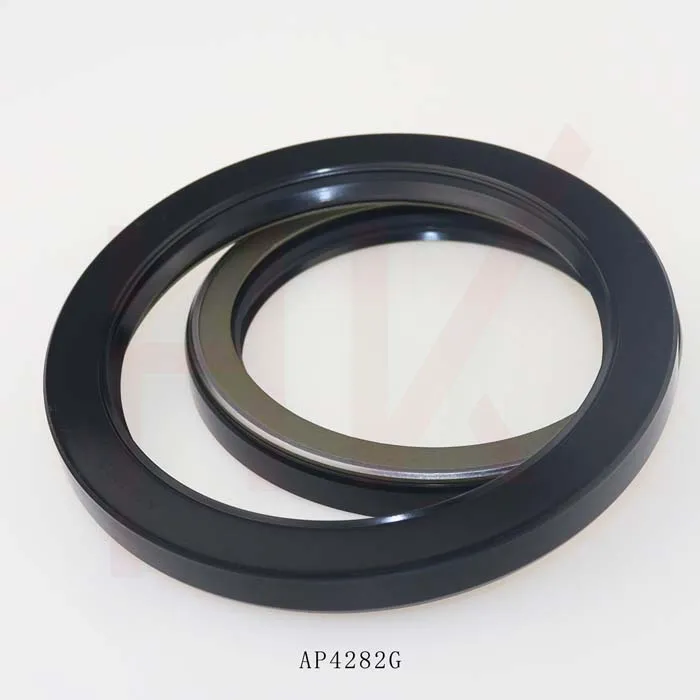dets. . 11, 2024 10:01 Back to list
Current Trends in Oil Seal Pricing and Market Analysis
The Price of Oil Seals Market Trends and Influencing Factors
Oil seals are critical components in various machinery and equipment, playing a pivotal role in preventing the leakage of lubricants and protecting moving parts from contaminants. As industries increasingly rely on efficient machinery, the demand for high-quality oil seals has surged, leading to dynamic fluctuations in their prices. Understanding the factors influencing the price of oil seals is essential for manufacturers, suppliers, and end-users alike.
One of the primary determinants of oil seal prices is the type of material used in manufacturing them. Oil seals are typically made from rubber, silicone, or a combination of both, which offers varying levels of resistance to temperature, pressure, and chemical exposure. The raw material costs can significantly affect the final price of oil seals. For instance, nitrile rubber is commonly used for its excellent oil resistance and durability, while fluorocarbon rubber (Viton) is chosen for extreme temperature applications. The prices of these materials can fluctuate based on global oil prices, as they are derived from petrochemical products.
Another influential factor is the manufacturing process. Oil seals are produced through advanced techniques, including molding and extrusion. The complexity of the manufacturing process, along with the need for precision engineering, can impact production costs. As technology advances, manufacturers may invest in more efficient production lines, which can lead to reduced costs over time. However, the initial investment in high-tech machinery can also raise the price of oil seals produced during the transition phase.
Market demand plays a significant role in determining oil seal prices. As industries such as automotive, aerospace, and industrial applications grow, so does the demand for reliable seals. Economic conditions can greatly influence these industries; periods of growth often see increased production and, consequently, higher demand for oil seals. Conversely, during economic downturns, demand may decline, leading to price reductions as manufacturers strive to maintain sales volumes.
price of oil seal

Geopolitical factors also affect the price of oil seals. Trade policies, tariffs, and international relations can disrupt supply chains and influence raw material costs. For instance, tensions in oil-producing regions can lead to increases in raw material prices, which will subsequently be passed on to the consumer. Additionally, trade agreements between nations can affect tariffs and duties on imported oil seals, further influencing their prices.
The rise of sustainable practices in manufacturing is another emerging trend affecting oil seal prices. Many companies are now striving to utilize eco-friendly materials and processes, which can initially drive up costs due to new materials and adaptation of production techniques. However, as these methods become more mainstream, the costs may stabilize, and companies can benefit from increased consumer preference for environmentally responsible products.
Market competition is another crucial factor. Numerous manufacturers produce oil seals, and the competitive landscape can keep prices in check. Companies that offer superior quality, innovative designs, and exceptional customer service can often command higher prices. Conversely, emerging manufacturers may enter the market with lower-priced options, forcing established companies to adjust their pricing strategies to remain competitive.
In conclusion, the price of oil seals is influenced by an intricate interplay of material costs, manufacturing processes, market demand, geopolitical factors, sustainability initiatives, and competition. As industries evolve, staying informed about these trends will be essential for making strategic purchasing decisions. Understanding the dynamics underlying oil seal pricing not only aids manufacturers and suppliers but also ensures that end-users can secure reliable products without compromising on quality or cost-effectiveness.
-
TCN Oil Seal Metal Ring Reinforcement for Heavy Machinery
NewsJul.25,2025
-
Rotary Lip Seal Spring-Loaded Design for High-Speed Applications
NewsJul.25,2025
-
Hydraulic Cylinder Seals Polyurethane Material for High-Impact Jobs
NewsJul.25,2025
-
High Pressure Oil Seal Polyurethane Coating Wear Resistance
NewsJul.25,2025
-
Dust Proof Seal Double Lip Design for Construction Equipment
NewsJul.25,2025
-
Hub Seal Polyurethane Wear Resistance in Agricultural Vehicles
NewsJul.25,2025
-
The Trans-formative Journey of Wheel Hub Oil Seals
NewsJun.06,2025
Products categories
















